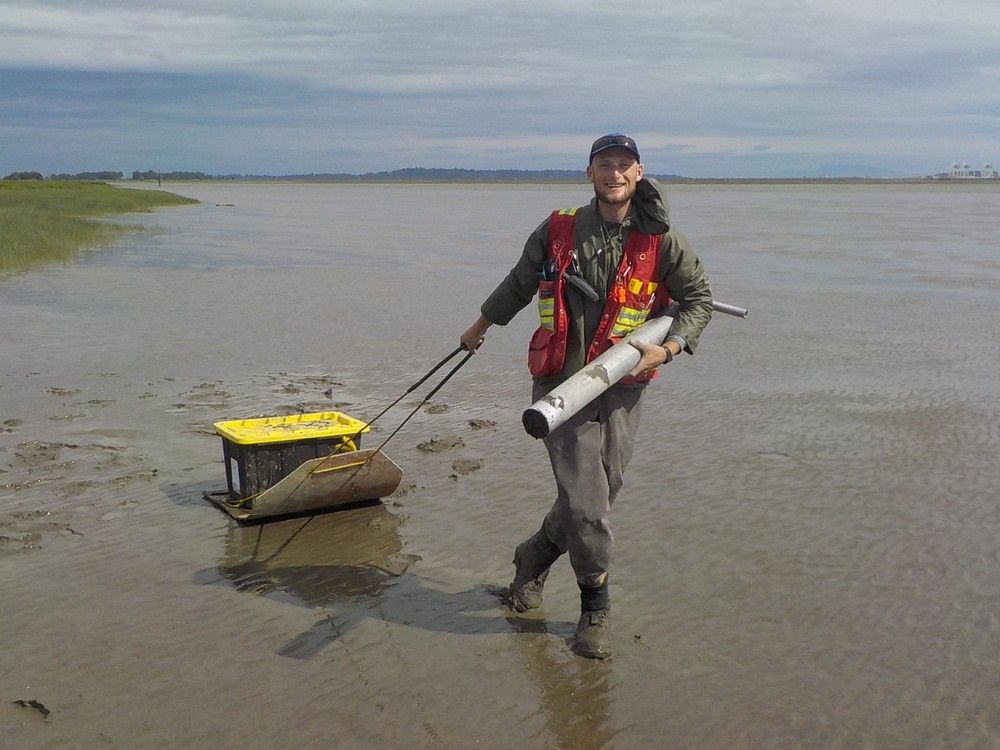Opinion: Healthy watersheds are potent natural defences for our towns, cities and businesses but many in B.C. need repair due to decades of mismanagement and damage.

Article content
As British Columbians head out to enjoy nature, the province is on high alert for one of its worst drought seasons. Two-thirds of B.C.’s 34 watersheds have reached drought Level 4 (out of 5) weeks earlier than expected. Four basins are at level 5, which means these areas will see adverse effects on communities and ecosystems. Meanwhile, forest fires are already raging in many areas. At a global level, the hottest average temperatures in history were recorded this July.
Advertisement 2
Article content
We have seen this movie before. Heat domes and drought led to uncontrollable wildfires in 2021. The burned landscape then contributed to devastating floods and landslides. Economists have estimated the cost of these connected disasters to be a staggering $10 to $17 billion. Then last year, B.C. experienced an unprecedented fall drought that left salmon stranded and residents of the Sunshine Coast days away from running out of water.
Article content
As climate disasters compound year over year, costs will continue to escalate. All levels of government must redouble efforts to reduce emissions and decarbonize economies. Yet even if countries sharply cut emissions, a hotter future is essentially locked in. Communities must adapt rapidly.
Article content
Advertisement 3
Article content
In late June, the federal government released its first-ever National Climate Adaptation Strategy, signalling a commitment to coordinated adaptation measures with provinces, territories and Indigenous governments.
One proven and cost-effective adaptation strategy in B.C. is rebuilding our watershed security. Healthy watersheds provide multiple societal benefits, including clean drinking water, water to grow food and power the economy, habitat for wild salmon, and cultural values for Indigenous peoples.
Healthy watersheds also comprise potent natural defences that blunt the impacts of climate disasters and increase safety for our towns, cities and businesses. For example, in the Fraser Estuary, Ducks Unlimited Canada is restoring the Sturgeon Bank tidal marsh to protect adjacent communities in Richmond from coastal flooding, strengthen resilience to sea level rise, and improve habitat for salmon and waterfowl. The International Institute for Sustainable Development has shown that natural infrastructure like this provides climate-proofing services at half the cost of human-built infrastructure.
Advertisement 4
Article content
We can reinforce natural defences and strengthen B.C.’s watershed security with three complementary actions.
The first is watershed renewal. Many of our watersheds need repairing due to decades of mismanagement and damage. This includes restoring wetlands and marshes that act like sponges to slow floodwaters, natural stream banks that shade spawning salmon during extreme heat, and mature forests that combat drought by absorbing rain and snow in the winter and releasing it when it’s dry.
Second, we must get the governance right so governments work together, not in silos. At a watershed scale, provincial, federal and First Nations governments should work with local communities to prioritize actions that reduce the risks of drought, flood, and wildfire. Collaborative models such as the Cowichan Watershed Board and Okanagan Basin Water Board provide examples to build upon.
Advertisement 5
Article content
Third, we need to stop flying blind. The province committed to producing State of Our Water reports well over a decade ago. Yet B.C. still lacks a coordinated program for assessing and communicating the health of our watersheds. Comprehensive watershed assessments grounded in Indigenous and Western knowledge are needed to inform watershed plans, set funding priorities, and pinpoint gaps in our natural defence systems.
The good news is the B.C. government has recognized the benefits of watershed security by creating a long-term Watershed Security Fund in partnership with B.C. First Nations. This fund should support these key actions. Announced in March, the fund was kick-started with a $100-million endowment that will provide about $5 million annually for watershed security work.
Advertisement 6
Article content
The not-so-good news is this initial investment is a drop in the bucket compared to the need. B.C.’s Forest Renewal program in the 1990s spent an average of $60 million annually over five years, restoring 150 of 1,100 priority watersheds ($100 million per year in today’s dollars).
The B.C. Watershed Security Fund needs to be scaled to at least $1 billion to achieve meaningful impacts. If we view our watersheds as critical infrastructure, this is comparable to the cost of constructing a single major bridge or highway. An investment of this scale will have immediate payback by reducing the costs of climate disasters and supporting the health and security of communities throughout the province, now and in the future.
If the federal and provincial governments are serious about climate adaptation, they should partner now to ensure B.C.’s Watershed Security Fund operates at a level where it can truly make a difference.
Coree Tull is co-chair of the B.C. Watershed Security Coalition; Sarah Nathan is B.C. conservation operations manager at Ducks Unlimited Canada.





















Comments
Postmedia is committed to maintaining a lively but civil forum for discussion and encourage all readers to share their views on our articles. Comments may take up to an hour for moderation before appearing on the site. We ask you to keep your comments relevant and respectful. We have enabled email notifications—you will now receive an email if you receive a reply to your comment, there is an update to a comment thread you follow or if a user you follow comments. Visit our Community Guidelines for more information and details on how to adjust your email settings.
Join the Conversation